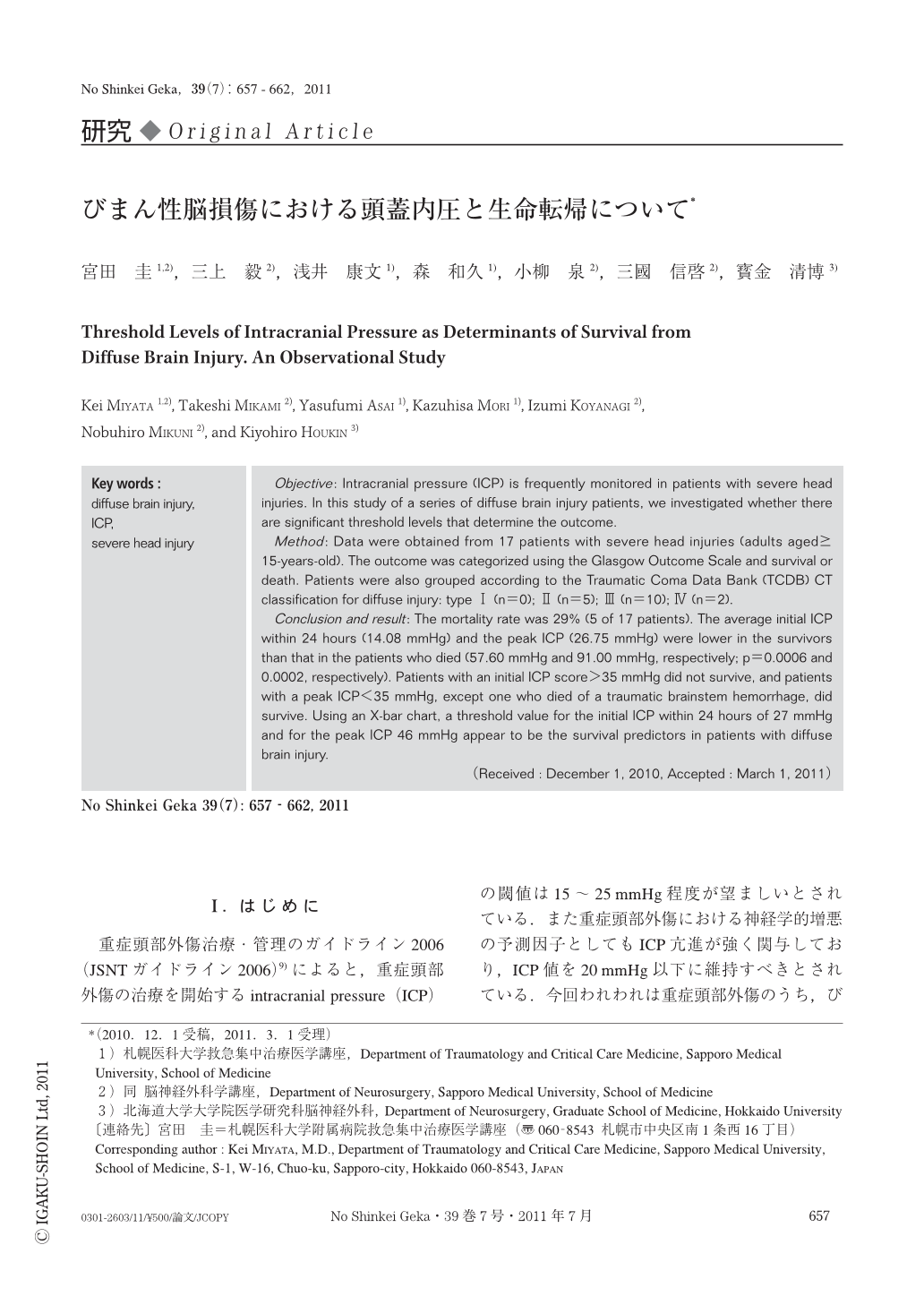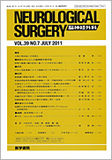Japanese
English
- 有料閲覧
- Abstract 文献概要
- 1ページ目 Look Inside
- 参考文献 Reference
Ⅰ.はじめに
重症頭部外傷治療・管理のガイドライン2006(JSNTガイドライン2006)9)によると,重症頭部外傷の治療を開始するintracranial pressure(ICP)の閾値は15~25mmHg程度が望ましいとされている.また重症頭部外傷における神経学的増悪の予測因子としてもICP亢進が強く関与しており,ICP値を20mmHg以下に維持すべきとされている.今回われわれは重症頭部外傷のうち,びまん性脳損傷(diffuse brain injury:DI)における頭蓋内圧と生命転帰について後向きに検討し,頭蓋内圧亢進を伴うびまん性脳損傷の治療戦略について文献的検討を踏まえ考察した.
Objective: Intracranial pressure (ICP) is frequently monitored in patients with severe head injuries. In this study of a series of diffuse brain injury patients,we investigated whether there are significant threshold levels that determine the outcome.
Method: Data were obtained from 17 patients with severe head injuries (adults aged≧15-years-old). The outcome was categorized using the Glasgow Outcome Scale and survival or death. Patients were also grouped according to the Traumatic Coma Data Bank (TCDB) CT classification for diffuse injury: type Ⅰ (n=0); Ⅱ (n=5); Ⅲ (n=10); Ⅳ (n=2).
Conclusion and result: The mortality rate was 29% (5 of 17 patients). The average initial ICP within 24 hours (14.08 mmHg) and the peak ICP (26.75 mmHg) were lower in the survivors than that in the patients who died (57.60 mmHg and 91.00 mmHg,respectively; p=0.0006 and 0.0002,respectively). Patients with an initial ICP score>35 mmHg did not survive,and patients with a peak ICP<35 mmHg,except one who died of a traumatic brainstem hemorrhage,did survive. Using an X-bar chart,a threshold value for the initial ICP within 24 hours of 27 mmHg and for the peak ICP 46 mmHg appear to be the survival predictors in patients with diffuse brain injury.

Copyright © 2011, Igaku-Shoin Ltd. All rights reserved.


